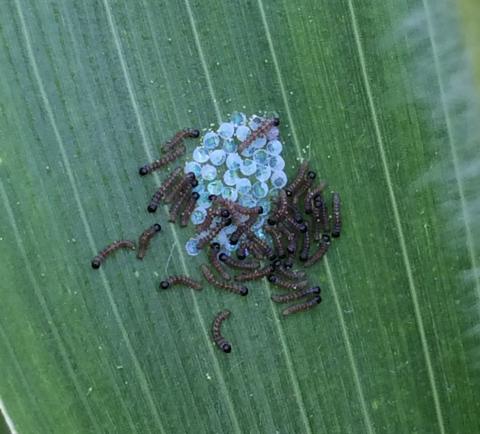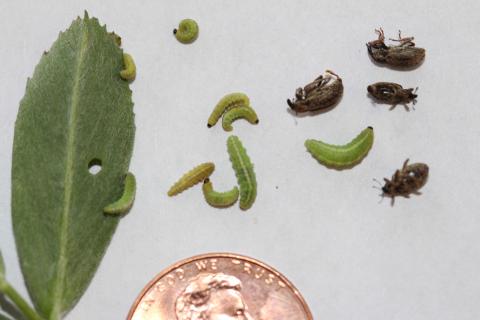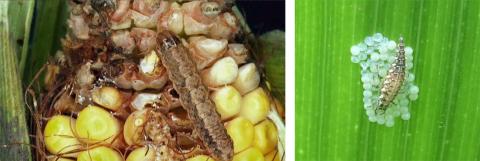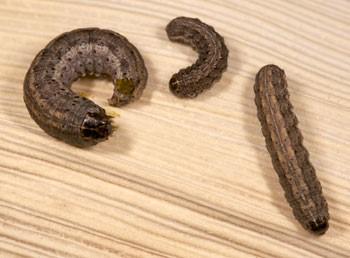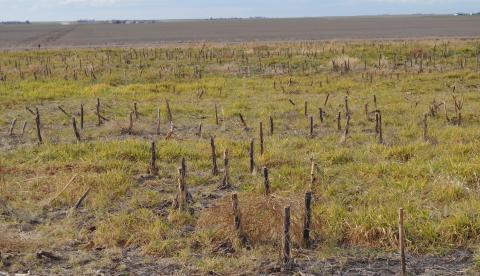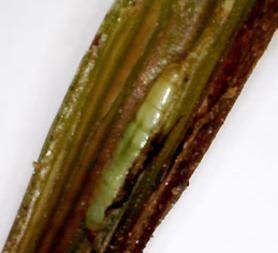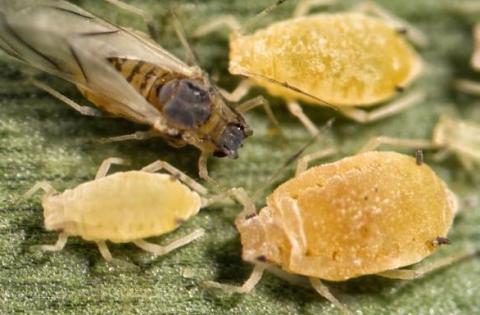Scouting and Treatment Recommendations for Western Bean Cutworm
July 11, 2017
Scouting is urged for Western bean cutworm in corn as moth flights are active and particularly heavy in south central Nebraska this week. This article includes trapping reports and recommendations for scouting and treatment.
Using Degree-Day Models to Predict Western Bean Cutworm Flights
June 15, 2017
Learn how degree-days are calculated and used to predict insect development and specifically, what they indicate for the timing of western bean cutworm development in Nebraska this year.
Scouting Advised for Alfalfa and Clover Leaf Weevils
April 20, 2017
Alfalfa weevils have been reported damaging alfalfa in north central Kansas and western Nebraska. As temperatures warm up, expect to see alfalfa weevil larvae in southern Nebraska and slightly later, in northern Nebraska. Even with the pressure of planting row crops, it is essential that producers growing high quality alfalfa hay make time to monitor fields for weevils now and over the next few weeks. See the article for a table of treatment thresholds for various alfalfa prices.
Which Bt Traits Do You Need to Purchase?
March 24, 2017
When it comes to buying corn seed, one way to save money can be to ensure that you don't invest in GMO insect protection traits that you do not need for your particular farm or field. Which corn rootworm, western bean cutworm, or European corn borer traits do you need? This article can help you determine which of the nine types of Bt proteins might best serve your needs.
Cutworm Scouting Urged in Western Nebraska Wheat and Alfalfa
March 23, 2017
Army cutworms are beginning to show up from central Kansas to Chappell. As wheat breaks dormancy, scouting for cutworms is advised from now through April to determine whether treatment is warranted.
Growers Urged to Keep a Watchful Eye for Wheat Viruses This Spring
January 25, 2017
While the mild fall promoted wheat establishment, it also favored survival of wheat curl mites, the leading vector of several viruses common to Nebraska wheat. While much of the state's wheat crop entered winter in very good condition, growers are urged to scout for viruses this spring and assess yield potential of individual fields when making management decisions.
Wheat Insects in 2016
September 1, 2016
The wheat stem sawfly continues to be the predominant insect in wheat and has now been verified in all Nebraska Panhandle counties as well as counties in southwest and south central Nebraska.
Be on the Lookout for Sugarcane Aphids on Sorghum
July 29, 2016
Nebraska grain sorghum producers are being advised to be on the lookout for sugarcane aphids. While this pest hasn't been a problem in Nebraska previously, it is in Kansas and moving north. The sugarcane aphid is light yellow to gray in color, with dark cornicles (“tail-pipes”) at the end of the body and dark tarsi (feet). Adult aphids can be winged or wingless.

